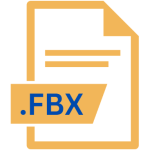.DFS File Extension

BrainSuite Surface File
| Developer | BrainSuite |
| Popularity | |
| Category | 3D Image Files |
| Format | .DFS |
| Cross Platform | Update Soon |
What is an DFS file?
The .DFS file extension stands for “BrainSuite Surface File,” a file format used primarily in neuroimaging and computational neuroscience.
It is associated with BrainSuite, a suite of tools developed for analyzing and visualizing brain imaging data.
Specifically, .DFS files store surface data related to brain structures, which can be used for various applications including brain mapping and anatomical studies.
More Information.
The BrainSuite project began in the early 2000s with the aim of improving the tools available for neuroimaging research.
The introduction of the .DFS file format was a critical step in supporting the representation of brain surfaces, which are essential for understanding brain anatomy and function.
The initial purpose of the .DFS file format was to store detailed surface data generated from brain imaging studies.
These surfaces are often derived from high-resolution MRI scans and are used to create detailed 3D models of brain structures.
The format allows for precise representation of these surfaces, which is crucial for research involving brain mapping, cortical analysis, and the study of brain disorders.
Origin Of This File.
The .DFS file format originates from the BrainSuite project, which was developed by researchers at the Brain Research Institute at the University of California, Los Angeles (UCLA).
BrainSuite was designed to provide advanced tools for the analysis and visualization of brain imaging data, focusing on the accurate representation and processing of brain surfaces and structures.
The format was introduced as part of BrainSuite’s effort to handle complex data related to brain surfaces. It facilitates the storage and sharing of surface data, enabling researchers to work with detailed and accurate models of brain anatomy.
File Structure Technical Specification.
The .DFS file format is specifically designed to store surface data of brain structures. The technical specifications of .DFS files include:
- Header Information: The beginning of a .DFS file typically contains metadata that describes the file’s contents, including information about the surface data, coordinate systems, and associated anatomical regions.
- Vertex Data: This section includes the coordinates of the vertices that make up the brain surface. The data is often represented in a three-dimensional Cartesian coordinate system.
- Face Data: This section contains information about the faces or polygons that connect the vertices to form the surface mesh. This data is used to reconstruct the 3D surface from the vertices.
- Additional Metadata: Depending on the implementation, .DFS files may include additional metadata related to the surface data, such as surface curvature, texture information, or anatomical labels.
The .DFS file format is designed to be compatible with BrainSuite’s tools, which means it adheres to specific conventions and structures defined by the BrainSuite software.
How to Convert the File?
Converting .DFS files to other formats typically requires the use of specialized tools or software. While BrainSuite itself is the primary tool for working with .DFS files, there are a few options for conversion:
- Using BrainSuite: BrainSuite may offer built-in options for exporting .DFS files to other common formats used in neuroimaging, such as
.STL(for 3D modeling) or.OBJ(a standard format for 3D objects). - Third-Party Tools: Some third-party software tools or scripts may offer support for converting .DFS files to other formats. These tools often require specific configurations and may not be universally compatible.
- Custom Scripts: For advanced users, custom scripts or code may be written to parse and convert .DFS files to other formats. This approach requires a good understanding of the file structure and programming skills.
Advantages And Disadvantages.
Advantages:
- High Precision: The .DFS format supports high-resolution surface data, allowing for detailed and accurate representation of brain structures.
- Integration with BrainSuite: It is specifically designed to work seamlessly with BrainSuite tools, providing a streamlined workflow for neuroimaging research.
- Custom Metadata: The format can include custom metadata, which can be useful for annotating and organizing surface data in various ways.
Disadvantages:
- Limited Support: Outside of BrainSuite, .DFS files may not be widely supported, which can limit interoperability with other software tools.
- Complexity: The file structure and format may be complex for users unfamiliar with neuroimaging data, requiring specialized knowledge to interpret and manipulate the data effectively.
- Proprietary Nature: The .DFS format is closely tied to BrainSuite, which may pose challenges for researchers using different software platforms or seeking to convert data to other formats.
How to Open DFS?
Open In Windows
- BrainSuite: The primary method for opening .DFS files on Windows is through BrainSuite. The software provides comprehensive tools for viewing and analyzing the surface data contained in .DFS files.
- Other Tools: Some general-purpose 3D visualization tools that support custom file formats may be able to open .DFS files if they have been converted to a compatible format.
Open In Linux
- BrainSuite: While BrainSuite is primarily developed for Windows and macOS, it may be possible to run it on Linux using compatibility layers or virtual machines.
- Other Tools: On Linux, users may need to rely on conversion tools or custom scripts to work with .DFS files.
Open In MAC
- BrainSuite: BrainSuite is available for macOS, and it can be used to open and work with .DFS files directly.
- Other Tools: Similar to Windows, other 3D visualization tools on macOS might open .DFS files if they have been converted.












